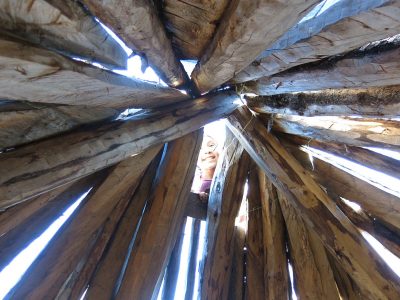By Tyrone Burke
It’s in the way that waves lap at a beach and the call of a loon echoing across a lake. It’s in grasslands that rustle in a prairie breeze and the chirping of songbirds in a wetland.
When people imagine nature, they often imagine a visual, but every landscape has a soundscape and those sounds are good for human health.
“There are pretty striking health benefits to the sounds of nature,” says Rachel Buxton, a research scientist in Carleton’s Department of Biology.
“Natural sounds alleviate stress and provide a range of health benefits. They improve our mood and our cognitive abilities. They have been shown to decrease pain during painful medical procedures and, of course, they alleviate stress.”

Prof. Rachel Buxton
Working with researchers from Michigan State, Colorado State and the U.S. National Park Service, Buxton conducted a meta-analysis of research into the health benefits of different types of nature sounds.
Published in the Proceedings of the National Academy of Sciences of the United States of America, the researchers found that people who listened to natural sounds had health outcomes that were 180 per cent better than those who did not.

Managing Noise Pollution
“Water sounds had a greater benefit for our feelings of tranquility, whereas birdsong actually had greater benefits for alleviating stress and annoyance. They really help us calm down and relax,” says Buxton.
She had previously studied the negative impact that noise pollution can have on humans and wildlife. There is a significant body of literature that shows sounds like traffic, aircraft and watercraft can have negative health consequences.
She wanted to learn more about the impact of its polar opposite. She hopes that more knowledge of the positive impact that natural sounds have can help broaden our approach to conservation.
“The first step is awareness. When you go in to these natural spaces, you need to really close your eyes and appreciate the sounds that are around you,” says Buxton.
“You need to really listen to the birds singing, and the wind rustling of leaves through the trees. When people learn to appreciate those sounds, and learn how important they are, intrusions on the acoustic experience becomes all the more disturbing.”

During the daytime hours of summer and fall, shuttle buses are the only vehicles allowed into the Maroon Bells Scenic Area in Aspen, Colorado to preserve nature sounds.
There have already been some efforts to reduce noise pollution in conservation areas, particularly by the U.S. National Park Service. Some of America’s busiest parks welcomed more than 12 million visitors in 2020.
“Some U.S. parks have introduced shuttle systems to reduce traffic, and the park service has teamed up with the Federal Aviation Administration to plan aircraft corridors better,” says Buxton.
“There are solutions, and by highlighting areas that have an abundance of natural sounds, we can help plan for opportunities to manage noise.”
Wednesday, April 21, 2021 in Environment and Sustainability
Share: Twitter, Facebook



